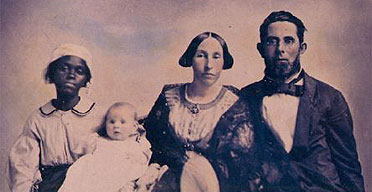 In early nineteenth-century England, Mary Prince’s “The
History of Mary Prince” (1831) was impacting society’s views on slaves and
slavery. Prince’s slave narrative
details her experiences as a slave and all of the hardships that she had to
endure in the process. When writing her
story, Prince employed the use of many different rhetorical strategies. Her discussions of her beatings, her pregnant
friend Hetty’s violent whipping and death, and her own unwavering devotion to
her kind owner, Mrs. Williams all help to show Prince’s humanity and to cause
an emotional connection in those reading her work.
In early nineteenth-century England, Mary Prince’s “The
History of Mary Prince” (1831) was impacting society’s views on slaves and
slavery. Prince’s slave narrative
details her experiences as a slave and all of the hardships that she had to
endure in the process. When writing her
story, Prince employed the use of many different rhetorical strategies. Her discussions of her beatings, her pregnant
friend Hetty’s violent whipping and death, and her own unwavering devotion to
her kind owner, Mrs. Williams all help to show Prince’s humanity and to cause
an emotional connection in those reading her work.
Prince also employed the use of religion to show her own
humanity. She says “I used to pray God
to pardon my sins for Christ's sake, and forgive me for every thing I had done
amiss; and when I went home to my work, I always thought about what I had heard
from the missionaries, and wished to be good that I might go to heaven” (Prince
17). Much of her audience was Christian during
this time, so this helped them to see how much she really was like them.
 Mary Prince’s story is similar to that of Tom in Harriet
Beecher Stowe’s Uncle Tom’s Cabin
(1852).
This story takes place in the United States, but also uses some
similar rhetorical strategies to those in “The History of Mary Prince.” In Stowe’s novel, Tom is a slave who has
recently been sold. While traveling to
meet his new owner, Tom encounters a young girl named Eva St. Claire. Tom saves Eva from drowning and is soon
bought by Eva’s family. Tom becomes very
close to Eva and eventually teaches her about Christianity through reading his
Bible together. Eva and her father soon
die, and Tom is sold to a new owner who beats and tortures him to the point of
death (You can see a video of this here). Tom begins to struggle with his
faith because of the extreme cruelty that his master is showing him; however,
he eventually comes to terms with it and teaches the other slaves about his
faith. Tom’s Christian faith is strong,
and only wavers because of the immense cruelty of his master. During this time, many people believed that slaves
were less human than white people. In
this story, however, Tom’s white owner is seen as inhuman while Tom is a kind
Christian man who only begins to struggle with his faith when faced with his
white master’s.
Mary Prince’s story is similar to that of Tom in Harriet
Beecher Stowe’s Uncle Tom’s Cabin
(1852).
This story takes place in the United States, but also uses some
similar rhetorical strategies to those in “The History of Mary Prince.” In Stowe’s novel, Tom is a slave who has
recently been sold. While traveling to
meet his new owner, Tom encounters a young girl named Eva St. Claire. Tom saves Eva from drowning and is soon
bought by Eva’s family. Tom becomes very
close to Eva and eventually teaches her about Christianity through reading his
Bible together. Eva and her father soon
die, and Tom is sold to a new owner who beats and tortures him to the point of
death (You can see a video of this here). Tom begins to struggle with his
faith because of the extreme cruelty that his master is showing him; however,
he eventually comes to terms with it and teaches the other slaves about his
faith. Tom’s Christian faith is strong,
and only wavers because of the immense cruelty of his master. During this time, many people believed that slaves
were less human than white people. In
this story, however, Tom’s white owner is seen as inhuman while Tom is a kind
Christian man who only begins to struggle with his faith when faced with his
white master’s.
No comments:
Post a Comment